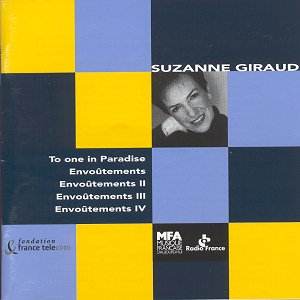 Composer: Franz Schubert
Composer: Franz Schubert
Works: Konzertstück D345, Felix Mendelssohn – Violin Concerto Op 64, Johannes Brahms – Double Concerto Op 102
Performers: Oleg Kagan, violin; Natalia Gutman, cello; Lithuanian Chamber Orchestra conducted by Saulus Sondezkis (Schubert); Leipzig Gewandhaus Orchestra conducted by Kurt Masur (Mendelssohn); Novosibirsk Symphony Orchestra conducted by Arnold Katz (Brahms)
Recording: Live Classics LCL 175
Label: Live Classics
Franz Schubert’s Konzertstück D345, a work brimming with youthful energy and lyrical charm, stands as a testament to the composer’s burgeoning genius at a time when he was still seeking his artistic voice. Its juxtaposition with the more established works of Mendelssohn and Brahms in this collection reveals a compelling narrative of Romantic expression, where Schubert’s lyrical tendencies meet the structural elegance of Mendelssohn and the profound emotionality of Brahms. This recording showcases Oleg Kagan’s formidable artistry as he navigates these diverse soundscapes, while also highlighting the different orchestral contexts that shape each composition’s interpretation.
The Mendelssohn Violin Concerto, recorded in 1983 with Kurt Masur and the Leipzig Gewandhaus Orchestra, illustrates Kagan’s technical prowess and interpretative insight. From the outset, the aggressive passagework in the first movement sets a tone that is both vigorous and assertive, yet one cannot overlook the occasional moments of disruption that arise from Kagan’s fervent playing. The expressive range in the Andante is commendable, yet the fast, tensile vibrato sometimes detracts from the gentler, more genial moments typical of Mendelssohn’s style. Masur’s skillful direction breathes life into the orchestral textures, particularly in the finale where the interplay between the soloist and the ensemble is engaging, if occasionally marred by untidiness. This performance, while not flawless, brims with musical vitality and showcases Kagan’s undeniable flair.
In contrast, the Brahms Double Concerto, featuring Kagan alongside his wife Natalia Gutman and led by Arnold Katz, offers a more nuanced exploration of the interplay between violin and cello. Katz begins the first movement with a deliberate tempo that initially feels stolid, yet allows the string players to develop an intimate dialogue that is characteristically Brahmsian. Kagan and Gutman’s interplay is particularly striking; they navigate the complex passagework with a keen awareness of both melodic and rhythmic potential, though the orchestral backdrop sometimes suffers from a clattering, disjointed quality. The slow movement, however, is a highlight, where a palpable sense of intimacy emerges, revealing the depth of feeling inherent in Brahms’s writing. The finale’s angularities are brought to the fore in a refreshingly intelligent interpretation that challenges conventional readings, emphasizing a more unsettled emotional landscape.
The recording quality across the three works presents a mixed picture. While the orchestral sound in the Mendelssohn is rich and vibrant, the Schubert suffers from a scrappy orchestral backdrop that can detract from Kagan’s expressive potential. The engineering choices made in capturing these live performances exhibit a degree of spatial disjunction, particularly in the Brahms, where the percussion’s presence seems overly pronounced. Comparatively, Kagan’s interpretations hold their own against notable recordings by contemporary violinists, yet the performances do leave one yearning for a more cohesive orchestral support in certain passages.
The overall experience provided by this collection is invigorating yet inconsistent. Kagan’s performances, though at times technically dazzling, reveal a tension between individual virtuosity and orchestral integration that can lead to an uneven listening experience. Each work is approached with a sense of exploration and intelligence, yet the execution occasionally falters under the weight of its ambition. This collection ultimately serves as a fascinating insight into Kagan’s artistry, revealing both the brilliance and the limitations of his interpretations in a Romantic context, along with the challenges inherent in live recordings.



